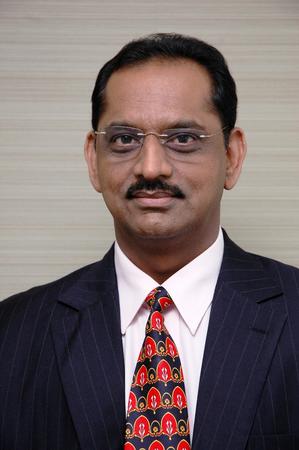Light Reading Asia talks with Madhusudan Mandyam, CEO of Virgin Mobile India, a franchisee of Tata Teleservices
August 23, 2010

Virgin Mobile India Pvt. Ltd. has embraced a niche marketing strategy, since for most of its subscribers the company acts as a secondary service provider. Indeed, around here, it's common for subscribers to have one SIM card for constant service, and one -- sometimes several -- other SIMs for cheap calls and data discounts, depending on the time of day and the rates of each provider.
Virgin's challenge: Convert these casual, secondary subscribers into primary users of Virgin Mobile.
Virgin Mobile is the only service provider in India that has adopted a niche strategy, and it is focused on the youth segment. A franchisee of Tata Teleservices Ltd. , the company launched its operations about two years back and today offers both GSM and CDMA services in 200 cities in the country.
It started rolling out GSM services about seven or eight months back, and Virgin Mobile is today available in 16 of India's 22 circles. CDMA services are available in 18 circles.
So how will Virgin Mobile India ensure that subscribers start using it as a primary SIM? Madhusudan Mandyam, CEO of Virgin Mobile India, gives us his perspective.  Light Reading: According to industry sources, Virgin Mobile is believed to have higher ARPU than the industry average. Is it true? What is your ARPU?
Light Reading: According to industry sources, Virgin Mobile is believed to have higher ARPU than the industry average. Is it true? What is your ARPU?
Madhusudan Mandyam: Our ARPU is better than the industry. In CDMA our ARPUs are at least 35 to 40 percent more than the industry. In GSM we have started our services only recently, so obviously we don't have too many subscribers. The main reason for our better ARPU is that this [youth] segment is a very high user of long-distance calling, SMS, and data. For us, the share of STD [subscriber trunk dialing] calling is 35 to 40 percent more than the industry average. Similarly, while VAS [value-added services] generally contributes around 9 percent to an operator's revenue, for us the contribution is 13 to 14 percent. [See India's Mobile ARPU on the Slide and India Adds 18M Subs in June.]
We don't divulge our subscriber numbers, but we had a mandate to contribute 10 percent of TTSL's portfolio. In CDMA we have done much better than that. [As of June 2010, Tata Teleservices had 72.5 million subscribers and 11.4 percent market share, according to Telecom Regulatory Authority of India (TRAI) .]
LR: What are the challenges of operating in an environment where most of your subscribers would be using a Virgin Mobile SIM as a secondary SIM?
Mandyam: On an average, around 75 to 80 percent of our subscribers use our SIM as a second SIM. The biggest challenge for us is to transform these subscribers to a primary user. Youth segment anyway doesn't have any loyalty. The subscribers in the age group of 13- to 18-years are generally first-time users of our services. (See Indian Handset Firms Grab Market Share.) LR: So, what is your strategy to change secondary users of Virgin Mobile to primary users?
LR: So, what is your strategy to change secondary users of Virgin Mobile to primary users?
Mandyam: We find that 50 to 55 percent of our subscribers continue to use our services even after a considerable period of time. We also believe that our products and tariffs are competitive and offer a good proposition to a consumer.
LR: When are you likely to launch 3G services?
Mandyam: 3G launch for us is linked to the launch of 3G services by Tata Teleservices. They should be able to launch the services in the coming three to four months, and we would be launching around the same time. In 3G, m-commerce is going to be an important part of our strategy. (See India's 3G Players Ready for Swift Launch, India's 3G Players Face Share Issue, India's 3G Auction Ends, Raises $14.6B, and India's 3G Billing Challenge.)
LR: What is going to be your strategy in m-commerce?
Mandyam: Our strategy is to go beyond offering the mobile services. So we started thinking, what do youth spend money on? We would like to address the lifestyle needs of this segment. So, basically, I want to be a medium through which they make purchases. If they want to, for instance, purchase a pair of jeans, I want to ensure that they do it through us. So, it is going to be a win-win for both the customer and me. If he/she buys through me, telephony becomes free or he gets free talk time, etc. We plan to launch this soon. We are looking at tie-ups with some of the retailers for this.
LR: What is going to be your capex this year?
Mandyam: We plan to invest around INR5,000 million (US$107.3 million) this year, which would be mostly spent on increasing VAS offerings and customer care, etc. Since we work with Tata Teleservices, we don't have to spend on network.
LR: Being a youth brand, data is an important part of your strategy. Do you see any difference in the uptake of data in GSM and CDMA services?
Mandyam: Data is an important part of our strategy. What we have observed is that in GSM, there is a good uptake of data services. Our experience is that the youth segment is not using data in the hand-held devices, but using it otherwise (like datacards). [See Report: Mobile Internet Yet to Take Off in India.]
LR: Do you think you will gain as a result of MNP [Mobile Number Portability], which, hopefully, should be launched soon?
Mandyam: 3G and MNP are likely to be launched at around the same time, so it is going to be a lethal combination. It is definitely going to be a big advantage for us. I think quality-of-service and customer care is going to become extremely important. We have launched certain initiatives like non-scripted call center, which is much appreciated by the youth since they don't like formality. Our call center executives are called Champs and a customer will not be required to call again and again to our call center, but executives of Champ will call the customer to close the call. Normally this is not the case. (See Will Churn Burn India's Mobile Operators? and MNP Delayed Again.)
— Gagandeep Kaur, India Editor, Light Reading
You May Also Like









